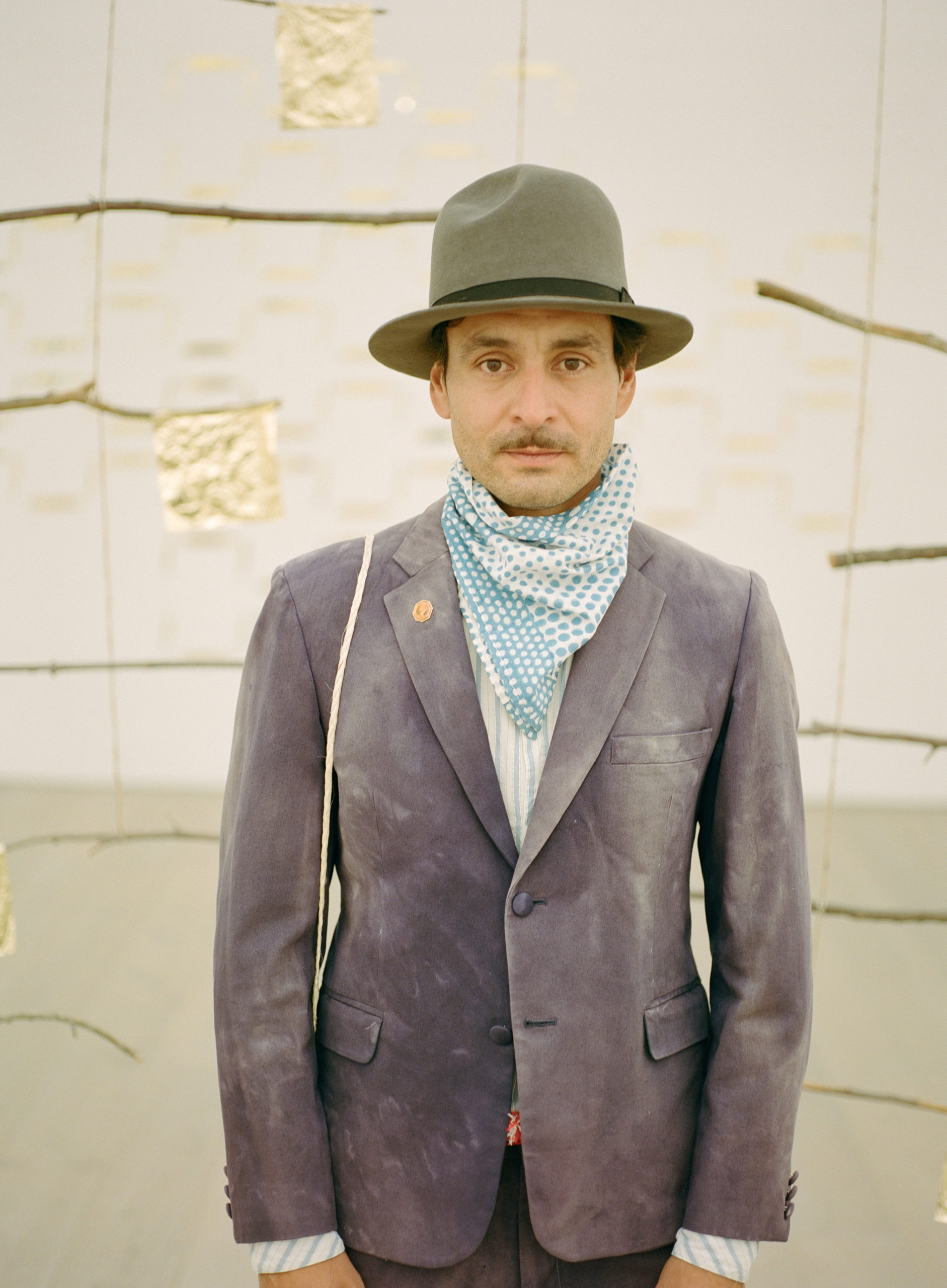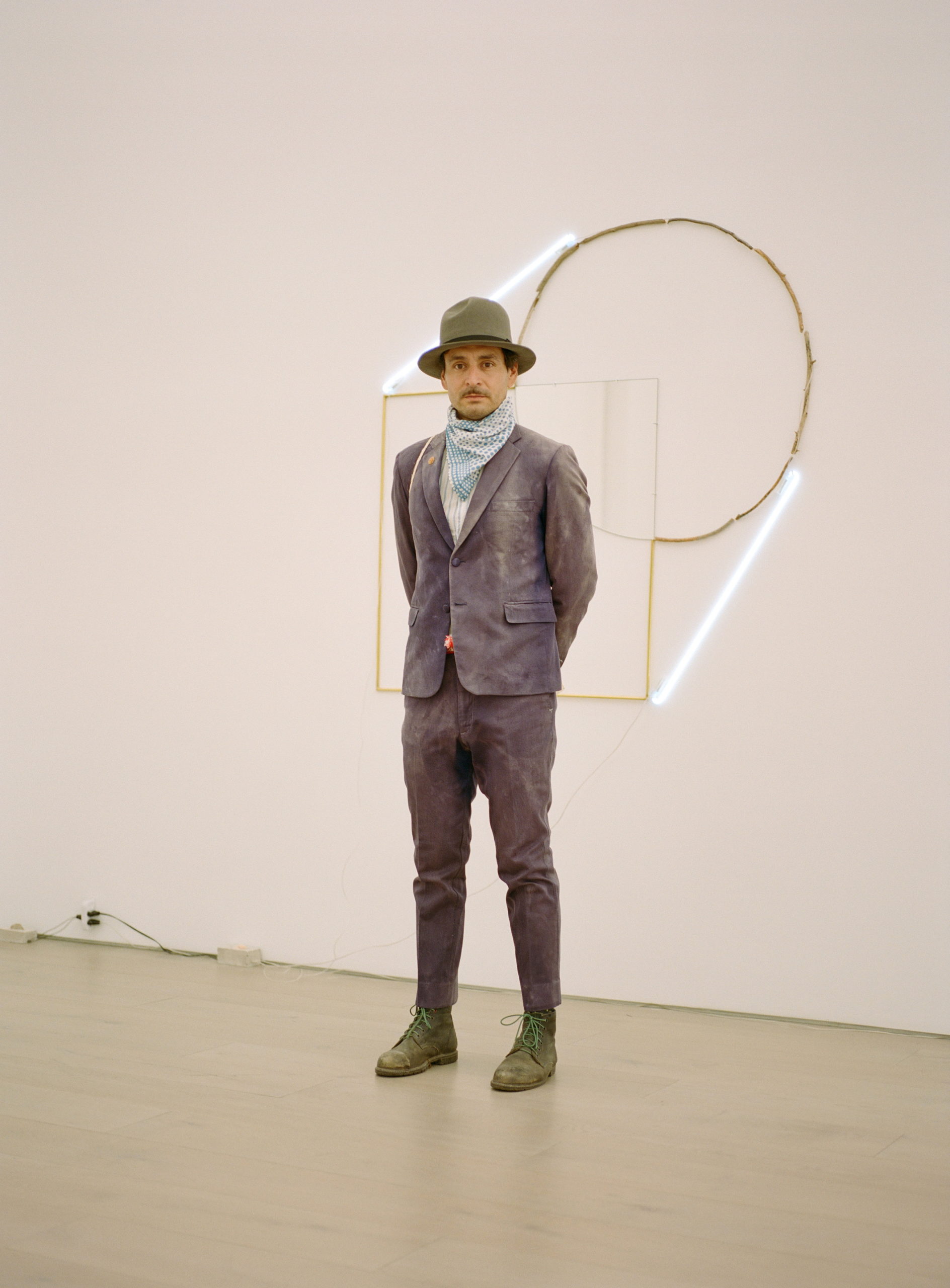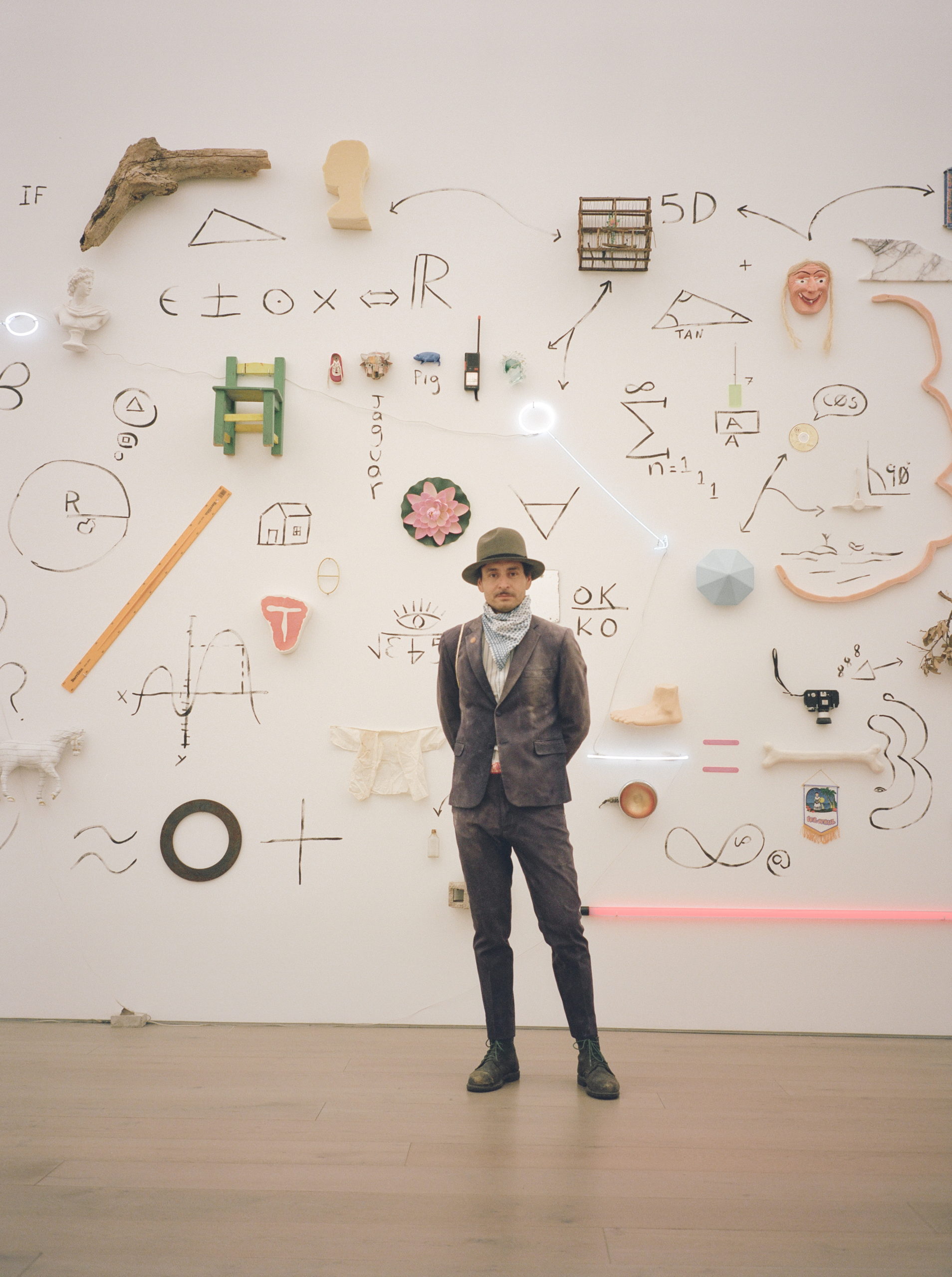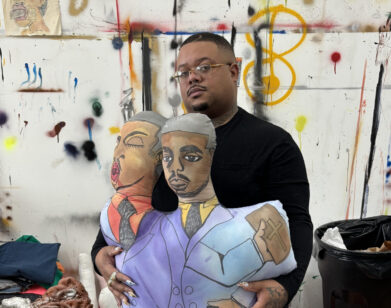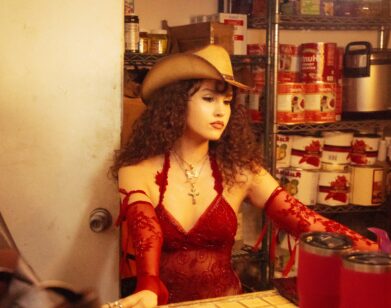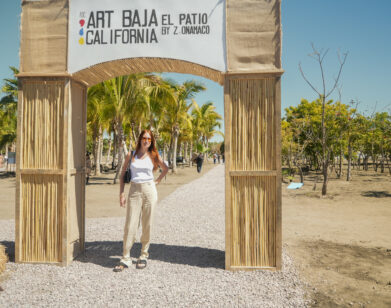gallery walkthrough
Artist Gabriel Rico Adds Up Found Objects and Mathematical Theorems
“They are crazy. It fascinated me,” says the Guadalajara, Mexico-based artist Gabriel Rico as he explains how he fell in love with contemporary artists like Mario Merz, Joseph Beuys, and Marcel Duchamp. His latest and first exhibit since the Venice Biennale, Of Beauty and Consolation, on view at Perrotin Gallery, exudes that same allure the artist found so tantalizing. His sculptures and wall installations explore the big enigmas of life—”What is the point of living?” or “How is my past molding my present?”—in the shape of mathematical theorems juxtaposed with child-like objects—a steak, dice, leaves, Coke bottles. Among those are items he’s collected over the years, like his grandmother’s teapot or his baptism shirt. During a visit to the Lower East Side gallery, Rico took the time to explain the method behind the chaos of his art theorems, the magic of collecting objects, bringing his dreams to life in 2D, and why art can and should happen anywhere, anytime.
———
ERNESTO MACIAS: You studied architecture, right?
GABRIEL RICO: I studied architecture at ITESO, Universidad Jesuita de Guadalajara. I finished my degree 15 years ago. In the middle of studying architecture, I realized that I liked architecture but it did not give me the freedom that art gives me. I started to use what I learned during my studies and started to explore art. If you notice, for architecture you need to mix various materials to make a house or a building — water, cement, plastic, sand. I do the same a bit, but I don’t make buildings, I make art.
MACIAS: What was it that woke up that need for freedom inside you?
RICO: Life is short. You can spend your whole life looking for a moment of freedom, and due to the conditions of the world, that can come in different ways. When I found myself in the middle of that search, I realized that I had spent most of my life studying in institutions that did not give me any freedom. I understood, as an architect, that freedom would take longer to arrive. In fact, I worked for five years as an architect as a drawer. I was still making art, but I realized that I could be drawing someone else’s idea all my life. In the first year and a half of my studies, I discovered contemporary art and I said: “This is precisely what allows me to be a critic, a philosopher, and to be free.”
MACIAS: I see that you collect objects. When did that start, outside of art?
RICO: All my life I have liked observing things. I am very curious. I used to go to the beach and walk with my mother, we would look for shells or snails. I think that collection is something that unites us as a species because you can collect anything from wood to make a fire and cook or just shells with your mother. Flea markets are very fun places because they are aesthetically baroque— there is too much information in the objects. I am interested in objects because they have energy that I cannot control—neither I nor others. It is controlled by a collective imagination. The meaning of a plate is the same, with some variations, all over the world. In other words, any person who sees my work, recognizes a plate, a steak, a shoe. It’s a fun process. I am interested in creating art that does not require a professional and deep education in contemporary art in order to enjoy it.
MACIAS: Accessible art.
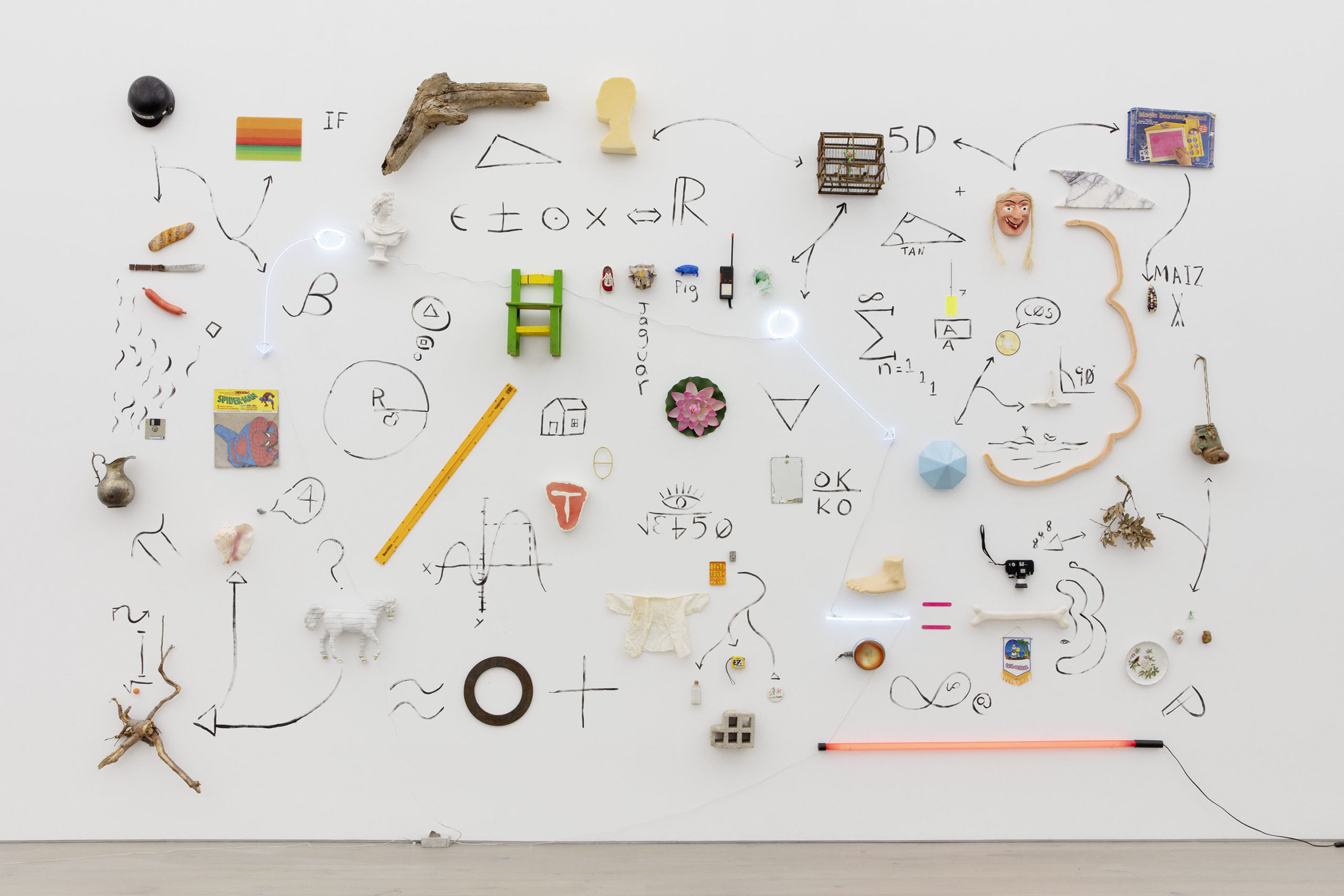
Rather than the obvious object (Theorem), 2021 Ceramic, mirror, neon, brass 148 x 630 x 14 cm | 58 1⁄4 x 248 1/16 x 5 1⁄2 in. Photographer: Guillaume Ziccarelli Courtesy of the artist and Perrotin.
RICO: Yes! So when a kid comes in and sees a deer, a horse, a snail—they can make their own story, regardless of the philosophical depth of the work. You don’t have to know the history of Roman sculpture, for example. They only see objects; the same goes for people. Adults can see that old teapot, and remember that their grandmother had one. There is an approximation between the people and the work that I no longer control. I am in favor of the artist not controlling the entire evolution of the piece.
MACIAS: Interesting you touch on that, because observing the formulas or theorems, at first glance they are very common objects but it is also something very intimate. I imagine that within the formulas and objects, you are expressing something personal.
RICO: Totally. I started collecting stamps more seriously when I was 10 years old. I did not want to become a hoarder, and this was the perfect solution. I was able to use my ability to know the aesthetics of objects and my love for them. For example, there you see that shirt is from my christening; that red tiny shoe is mine; that Spider-Man toy, I found 25 years ago in a market. History and the present are not separate; it is the same continuous line in my life—from the objects that I make to the objects that belong to my parents that are part of my life.
MACIAS: As a Mexican artist, how important is it to use objects that are internationally recognized but have a more intimate feeling for a person of Mexican origin?
RICO: As a Mexican artist, I don’t try to talk about my Mexican-ness, not because I don’t like it—in fact, I’m a nationalist, in many other ways. What interests me about art is the universality that human beings have. It must transcend races, customs, and nationalities. I try to tell stories where the objects have a similar meaning all over the world, beyond just México. I get this question a lot, but there are many times they say: “Why don’t you make a marijuana leaf if there is a problem with drugs in México?” I say well, apparently, for the media, that problem arises in México, but I do not know where it begins or where it ends.

The second cause is meant to be an explanation of the first (Páramo, The reunion I), 2020. Cotton yarn on wooden board coated with beeswax. 100 x 150 x 5 cm. Photographer: Guillaume Ziccarelli. Courtesy of the artist and Perrotin.
MACIAS: Tell me about this more recent piece of work (pictured above); it’s a bit different from the others.
RICO: I have a special interest in the indigenous communities of northern México. Basically, I have been attending Easter celebrations with tribes like the Yakis, the Huicholes, the Seris, the Tarahumara — the communities that exist in México that are quite distant. Access is difficult and slow, and after 7 or 8 years of going on pilgrimage with these communities, I asked myself: “What technique could I use to transform my sculptures to 2D?” I learned about this technique called Nierika that the Huicholes use to represent dreams. This is a sophisticated technique; it is thread glued to the wood with beeswax. Below the thread is beeswax, glued thread by thread by hand. A couple of expert masters of this technique take a month to make each one. I cannot do it. With great pride, I say that they shared their technique with me because not everyone has passed it on. They know that I am committed to them, I have a long-standing relationship with them and they help me in a spiritual way to the point that Manolo, the Huichol artisan who helps me do it, trusts me. He told me, “I use this technique to represent my dreams and you do the same. I’m going to help you do it. “
MACIAS: What can you recommend to a young artist who doesn’t know where to start?
RICO: Decentralization. I heard of this term about 15 years ago, when I heard that the Japanese were leaving Tokyo to set up farms. I was very interested in this, I began to see it as a necessity rather than a luxury. You cannot put total control in a field as open as art—it has to be open, to your possibility of life. In the past, people went to New York, to Paris, because there was no access to information. Now with the internet, if you have a good signal you can read philosophy, whatever you want. It is the future. That is one of the decisions for which I am not leaving Guadalajara. I am interested that the new generations, as I learned from old generations, understand that right now it is possible to stay in your country, in a city that is not Mexico City, and still be an artist. I am very interested because I believe in the decentralization of information. Centralization is killing cities; resources run out and nature is killed. On the other hand, if humanity disperses, I believe that we will find a faster approach towards nature, than if we continue as we are.

